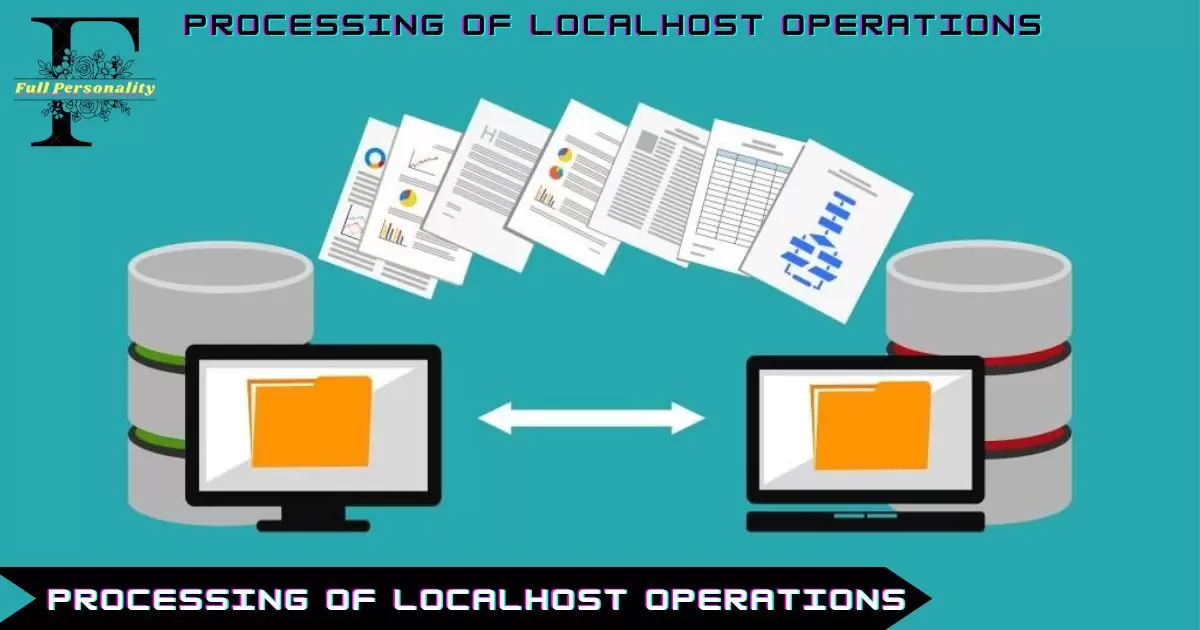In the world of networking and software development, certain terms and numbers hold special significance. One such combination is 127.0.0.1:49342. This address, often referred to as localhost, plays a crucial role in networking, debugging, and developing applications. But what exactly does it mean? How does it work? And why is it so important?
What is 127.0.0.1?
127.0.0.1 is a special-purpose IPv4 address known as the loopback address. It is used to establish an IP connection to the same machine or computer being used by the end-user. This means any network requests sent to 127.0.0.1 are looped back, allowing the computer to communicate with itself. This loopback mechanism is essential for testing and debugging network applications.
Significance of Port 49342
In networking, a port is a logical endpoint in a network that identifies a specific process or service. Port numbers range from 0 to 65535, with each number serving a distinct purpose. Port 49342, in particular, is dynamic or private. These ports (49152-65535) are not reserved by the IANA (Internet Assigned Numbers Authority) and are often used for custom or temporary purposes.
You may want to Read: 127.0.0.1:62893 Explained: Troubleshooting Common Errors
Combining 127.0.0.1 and Port 49342
When combined, 127.0.0.1:49342 represents a unique address on your local machine that a specific service or application can use to communicate. For example, a developer might configure a web server to listen to this address during testing, ensuring that requests to the server don’t leave the local machine. This setup is crucial for debugging and ensuring that the server behaves as expected before deployment.
The Vital Role of Port 49342
Network Services and Applications
Port 49342 is dynamic, meaning it is not bound to any specific service or protocol. This flexibility makes it an ideal choice for developers and system administrators who need a port for temporary or custom services. By using a dynamic port like 49342, developers can avoid conflicts with well-known ports that are reserved for standard services (e.g., HTTP on port 80, and HTTPS on port 443).
Debugging and Testing
One of the primary uses of 127.0.0.1:49342 is in debugging and testing. When developing a network application, it’s essential to test it in a controlled environment. By binding the application to 127.0.0.1:49342, developers can simulate network communication without affecting other network activities. This method helps identify issues, optimize performance, and ensure the application works correctly before deploying it to a production environment.
Case Study: Web Development
Consider a web developer working on a new web application. They might configure their local development server to listen on 127.0.0.1:49342. This setup allows the developer to access the application via http://127.0.0.1:49342 in their web browser.
You may want to Read: AIOtechnical.com Computer: Everything You Need To Know 2024
Because the server is only accessible from the local machine, the developer can test changes in real time without exposing the application to the internet. Once the development and testing phases are complete, the server can be configured to use a public IP address and a standard port for deployment.
Deploying and Configuring Local Servers
Setting Up a Local Server
Deploying a local server is a common task for developers. Here’s a step-by-step guide to setting up a simple HTTP server on 127.0.0.1:49342 using Python:
- Install Python: Ensure Python is installed on your machine. You can download it from the official Python website.
- Open Command Prompt or Terminal: Navigate to the directory where you want to serve files.
- Run the HTTP Server: Execute the following command:bash
python -m http.server 49342
- Access the Server: Open your web browser and navigate to
http://127.0.0.1:49342.
This command starts a simple HTTP server that serves files from the current directory on port 49342. The server listens on 127.0.0.1, making it accessible only from the local machine.
You may want to Read: https //www.microsoft.com /ink – The ultimate guide
Configuring Advanced Servers
For more advanced server configurations, developers often use platforms like Apache, Nginx, or Node.js. Here’s a basic example of configuring a Node.js server to listen on 127.0.0.1:49342:
- Install Node.js: Download and install Node.js from the official website.
- Create a Server Script: Create a file named
server.jswith the following content:javascriptconst http = require('http');const hostname = '127.0.0.1';
const port = 49342;const server = http.createServer((req, res) => {
res.statusCode = 200;
res.setHeader('Content-Type', 'text/plain');
res.end('Hello, world!\n');
});server.listen(port, hostname, () => {
console.log(`Server running at http://${hostname}:${port}/`);
});
- Run the Server: Open a terminal, and navigate to the directory containing
server.js, and run the command:bashnode server.js
- Access the Server: Open your web browser and navigate to
http://127.0.0.1:49342.
This script creates a simple Node.js server that responds with “Hello, world!” to any request. The server listens on 127.0.0.1:49342, making it accessible only from the local machine.
Table: Comparison of Local Server Setup Methods
| Method | Language/Platform | Complexity | Use Case |
|---|---|---|---|
| Python HTTP Server | Python | Easy | Quick file serving and testing |
| Node.js Server | JavaScript | Medium | Custom server logic and real-time updates |
Security Implications of 127.0.0.1:49342
Localhost Security
Using 127.0.0.1 (localhost) for network services offers several security benefits. Since the address is only accessible from the local machine, it prevents external access to the service.
This setup is ideal for testing and development environments where security is a concern. By limiting access to localhost, developers can ensure that sensitive data and application logic are not exposed to the internet.
Common Security Practices
Despite the inherent security of localhost, it’s essential to follow best practices to further enhance security:
- Use Strong Authentication: Even on localhost, ensure that any services requiring login have strong authentication mechanisms in place.
- Keep Software Updated: Regularly update your development tools and libraries to protect against known vulnerabilities.
- Monitor Localhost Traffic: Use tools like Wireshark to monitor network traffic and detect any unusual activity on localhost.
Case Study: Securing a Local Database
Imagine a scenario where a developer is working with a local database server (e.g., MySQL) bound to 127.0.0.1:49342. To secure the database:
- Configure MySQL: Ensure MySQL is configured to listen only on 127.0.0.1.
- Set Strong Passwords: Use strong passwords for database user accounts.
- Use Firewalls: Configure a local firewall to block any unauthorized access attempts.
- Regular Backups: Regularly back up the database to prevent data loss in case of a security breach.
By following these practices, the developer can ensure that the local database remains secure and accessible only from the local machine.
A Guide to Localhost: Fixing and Working
Common Issues and Fixes
Working with local hosts can sometimes present challenges. Here are some common issues and their solutions:
- Port Conflicts: If port 49342 is already in use, the server will fail to start. To resolve this, choose a different port number or stop the conflicting service.
- Firewall Restrictions: Local firewalls may block traffic to 127.0.0.1:49342. Ensure that the firewall settings allow traffic on the specified port.
- DNS Issues: In some cases, the hostname ‘localhost’ may not resolve correctly. Use the IP address 127.0.0.1 directly to avoid DNS issues.
You may want to Read: Halo (2003) Game Icons and Banners
Practical Tips for Working with Localhost
- Use Descriptive Hostnames: For complex projects, consider using custom hostnames (e.g.,
dev.myapp.local) mapped to 127.0.0.1 for better organization. - Leverage Environment Variables: Use environment variables to configure the port and hostname, making it easier to switch between development and production environments.
- Utilize Logging: Implement robust logging mechanisms to track activity and troubleshoot issues effectively.
Case Study: Debugging a Local Web Application
Consider a scenario where a developer is debugging a local web application on 127.0.0.1:49342. They encounter an issue where the application fails to start. Here’s a step-by-step debugging approach:
- Check Port Availability: Use the command
netstat -an | grep 49342to check if the port is already in use. - Review Firewall Settings: Ensure that the local firewall allows traffic on port 49342.
- Inspect Application Logs: Review the application logs to identify any errors or misconfigurations.
- Verify Dependencies: Ensure that all necessary dependencies and services are running correctly.
By following these steps, the developer can systematically identify and resolve the issue, ensuring that the application runs smoothly on localhost.
What Is an IP Address?
Definition and Purpose
An IP address (Internet Protocol address) is a unique identifier assigned to each device connected to a network. It allows devices to communicate with each other over the internet or a local network. IP addresses are essential for routing data packets between devices, ensuring that the information reaches the correct destination.
IPv4 vs. IPv6
There are two versions of IP addresses in use today: IPv4 and IPv6.
- IPv4: The most common type, consisting of four sets of numbers separated by periods (e.g., 192.168.1.1). IPv4 addresses are 32-bit numbers, allowing for approximately 4.3 billion unique addresses.
- IPv6: A newer version designed to address the limitations of IPv4. IPv6 addresses are 128-bit numbers, represented as eight groups of four hexadecimal digits separated by colons (e.g., 2001:0db8:85a3:0000:0000:8a2e:0370:7334). This provides a virtually unlimited number of unique addresses.
Table: Comparison of IPv4 and IPv6
| Feature | IPv4 | IPv6 |
|---|---|---|
| Address Length | 32 bits | 128 bits |
| Address Format | Dotted decimal | Hexadecimal, separated by colons |
| Address Space | ~4.3 billion addresses | Virtually unlimited |
| Example | 192.168.1.1 | 2001:0db8:85a3:0000:0000:8a2e:0370:7334 |
Types of IP Address
Static IP Address
A static IP address is a permanent IP address assigned to a device. It does not change over time, making it ideal for servers and other devices that need a consistent address. Static IP addresses are often used in scenarios where a reliable connection is essential, such as hosting websites, running servers, or accessing devices remotely.
Dynamic IP Address
A dynamic IP address is assigned by a DHCP (Dynamic Host Configuration Protocol) server and can change over time. Most consumer devices, such as home computers and smartphones, use dynamic IP addresses. This flexibility allows efficient use of IP addresses, as they are assigned only when needed and can be reassigned to different devices over time.
Public vs Private IP Addresses
- Public IP Addresses: Assigned by an Internet Service Provider (ISP) and are accessible over the Internet. Public IP addresses are used to identify devices on the global internet.
- Private IP Addresses: Used within a private network and are not accessible from the internet. Private IP addresses are used to identify devices within a local network, such as a home or office network.
Table: Public vs Private IP Addresses
| Feature | Public IP Address | Private IP Address |
|---|---|---|
| Accessibility | Accessible over the internet | Accessible only within a local network |
| Assignment | Assigned by an ISP | Assigned by a network router |
| Address Range | Unique globally | Limited to specific ranges (e.g., 192.168.x.x, 10. x.x.x) |
Processing of Localhost Operations
How Localhost Works
When a device communicates with 127.0.0.1 (localhost), the network stack routes the traffic back to the same device without sending it over the physical network. This loopback mechanism is essential for testing and debugging network applications, as it allows developers to simulate network communication without affecting other network activities.
You may want to Read: Ark: Survival Evolved (2017) Game Icons Banners
Use Cases for Localhost
- Testing Web Applications: Developers often use localhost to test web applications before deploying them to a live server.
- Running Local Services: Localhost can host services like databases, web servers, and APIs for development purposes.
- Debugging Network Issues: Localhost helps identify and resolve network issues by isolating the environment from external factors.
Example: Running a Localhost Web Server
Consider a developer running a web server on localhost:
- Start the Server: Use a command or script to start the web server on 127.0.0.1:49342.
- Access the Server: Open a web browser and navigate to
http://127.0.0.1:49342. - Test the Application: Interact with the web application to ensure it behaves as expected.
By using localhost, the developer can thoroughly test the application in a controlled environment.
Some Major Troubleshooting Issues
Common Localhost Problems
Working with local hosts can sometimes present challenges. Here are some common issues and their solutions:
- Port Conflicts: If port 49342 is already in use, the server will fail to start. To resolve this, choose a different port number or stop the conflicting service.
- Firewall Restrictions: Local firewalls may block traffic to 127.0.0.1:49342. Ensure that the firewall settings allow traffic on the specified port.
- DNS Issues: In some cases, the hostname ‘localhost’ may not resolve correctly. Use the IP address 127.0.0.1 directly to avoid DNS issues.
Practical Tips for Working with Localhost
- Use Descriptive Hostnames: For complex projects, consider using custom hostnames (e.g.,
dev.myapp.local) mapped to 127.0.0.1 for better organization. - Leverage Environment Variables: Use environment variables to configure the port and hostname, making it easier to switch between development and production environments.
- Utilize Logging: Implement robust logging mechanisms to track activity and troubleshoot issues effectively.
Case Study: Debugging a Local Web Application
Consider a scenario where a developer is debugging a local web application on 127.0.0.1:49342. They encounter an issue where the application fails to start. Here’s a step-by-step debugging approach:
- Check Port Availability: Use the command
netstat -an | grep 49342to check if the port is already in use. - Review Firewall Settings: Ensure that the local firewall allows traffic on port 49342.
- Inspect Application Logs: Review the application logs to identify any errors or misconfigurations.
- Verify Dependencies: Ensure that all necessary dependencies and services are running correctly.
By following these steps, the developer can systematically identify and resolve the issue, ensuring that the application runs smoothly on localhost.
FAQs
What is the 127.0.0.1 address used for?
The 127.0.0.1 address, also known as localhost, is used for network testing and communication within the same device. It allows a computer to send network requests to itself.
What is localhost used for?
Localhost is used for testing and development purposes, enabling applications to communicate with the local machine without external network traffic.
What is the IP address of the local host?
The IP address of the localhost is 127.0.0.1.
What is a loopback address used for?
A loopback address is used to route network traffic back to the same device, facilitating testing, debugging, and development of network applications.
What does ping 127.0.0.1 verify?
Pinging 127.0.0.1 verifies that the network stack on the local machine is functioning correctly. It checks if the device can send and receive network packets to itself.
Conclusion
Understanding and utilizing 127.0.0.1:49342 is crucial for developers and system administrators. This unique address allows for secure, controlled testing and development of network applications.
By following best practices and understanding the underlying principles, you can effectively use localhost and port 49342 to simplify network services and debugging processes.

Hello, I’m Andria Brown, the founder of Full Personality. With a background in SEO and three years of experience, I’ve always been fascinated by the ever-changing world of blogging. Full Personality is my platform to delve into the future of blogging. When not exploring tech trends, I focus on SEO and SERPs. I believe in building a community that shares ideas and stays ahead in innovation. Join me on this exciting journey!




